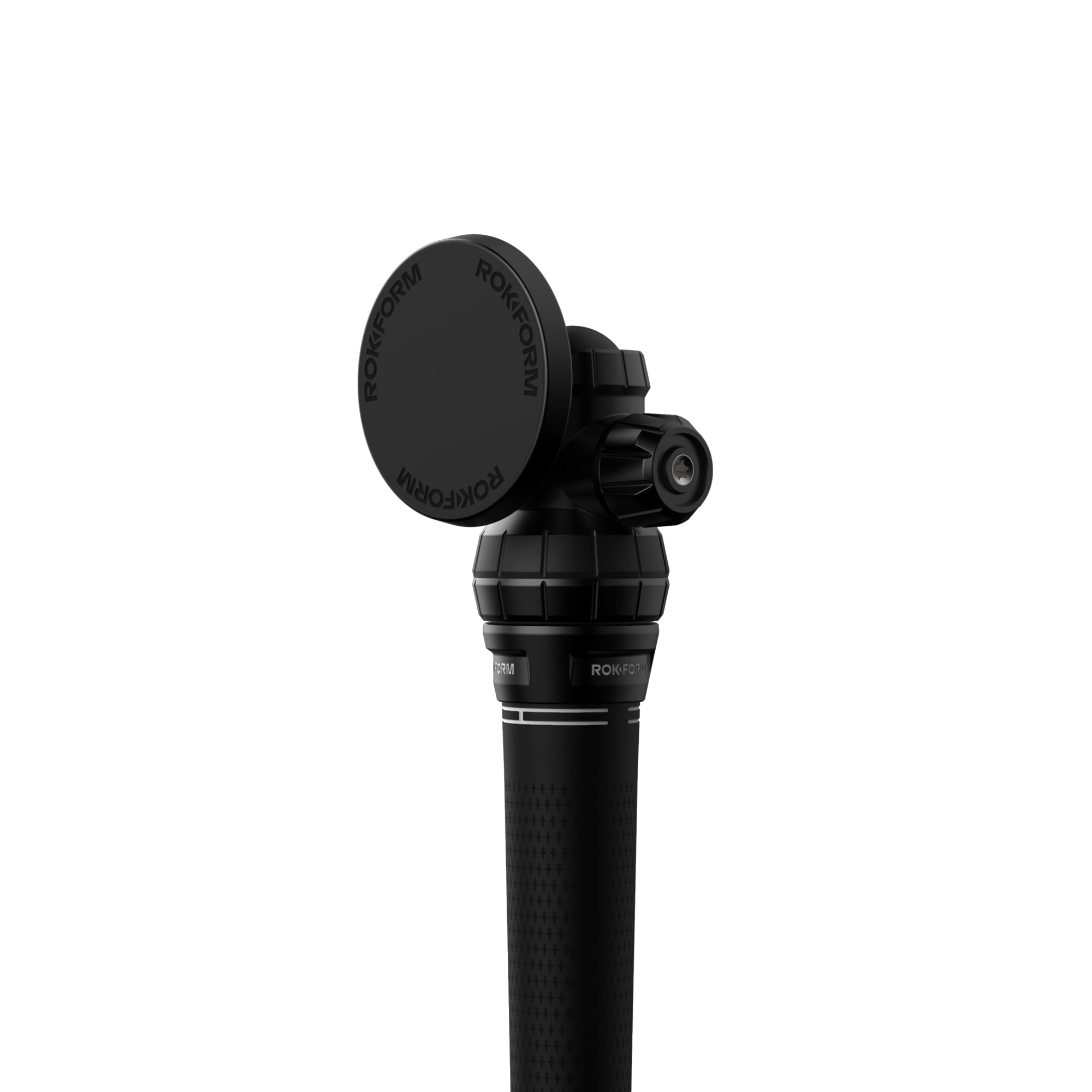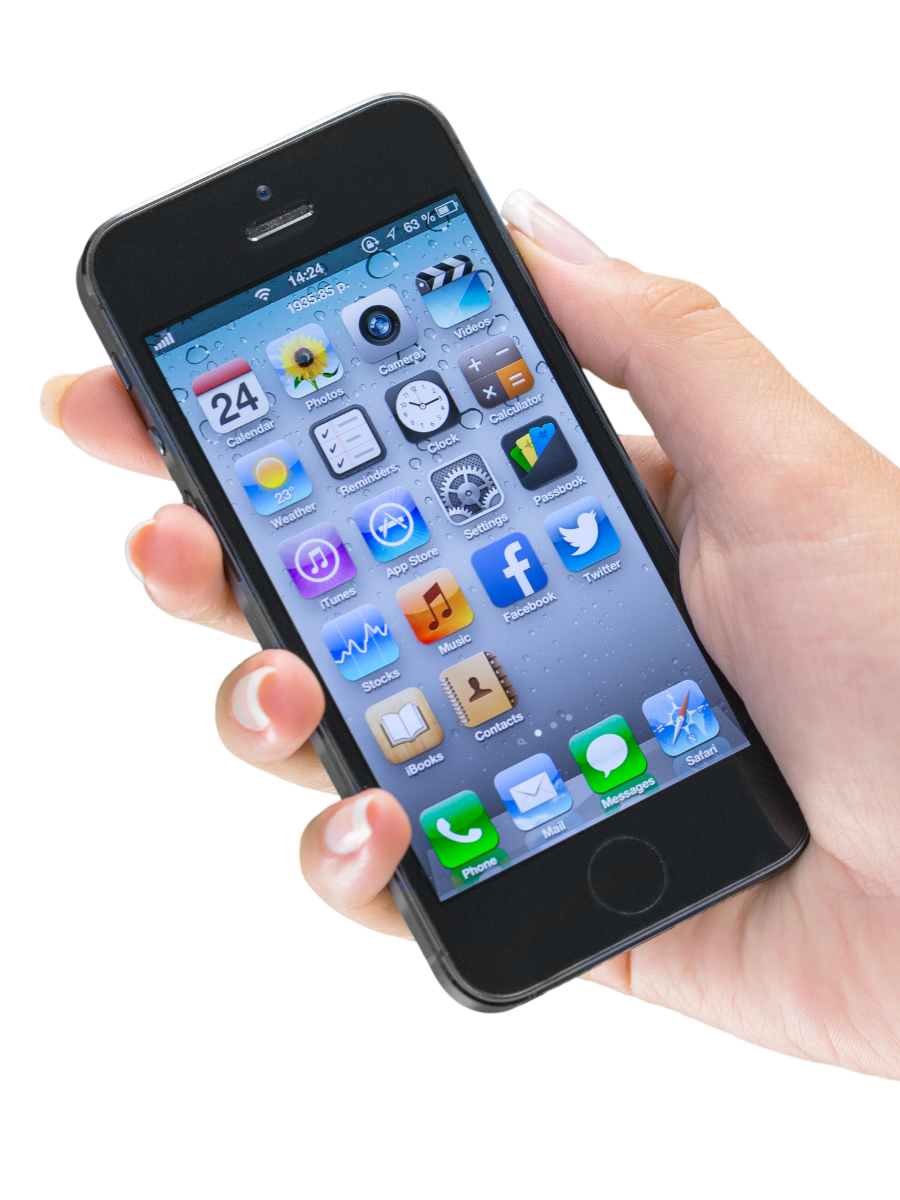Slow performance, freezing apps, and random crashes — every smartphone user dreads these frustrating issues. If your iPhone has started acting like it’s on strike, don’t panic. Sometimes, a simple restart is all it takes to get things running smoothly again.
A few tips can help you, like understanding how battery optimization really affects your phone’s performance.
But when a restart isn’t enough, and your phone still lags or crashes, it might be time for a fresh start. Restore your iPhone to factory settings.
Resetting your iPhone to factory settings can feel like a drastic step. However, it's often the most effective way to wipe out stubborn problems. This process erases everything — your apps, your settings, files, and personal data — essentially giving your device a clean slate. It’s also a must-do if you're planning to sell or give away your phone.
Before you hit “Erase All Content and Settings”, make sure you know how to reset the iPhone to factory settings the right way. Let’s walk through the steps to factory reset your iPhone safely and smartly.
TL;DR
There are several iPhone reset options that target different problems.
A hard reset will be necessary if nothing else works.
Sometimes, you must incorporate different methods to protect your data during resets.
Each iPhone model follows specific reset steps.
The best way to avoid problems during an iPhone reset is to protect data beforehand and schedule the process to avoid potential issues.
After a reset, you should customize settings to optimize performance.
Protecting your iPhone from damage is essential after going through the reset process.
Understanding iPhone Reset Types
Before we talk about resetting iPhones, did you know that iPhone resets come in several forms? Yes, each serves a specific purpose in troubleshooting and maintenance.
The main difference to consider is that soft resets restart your iPhone without data loss, while hard resets force your device to restart when it's frozen or unresponsive.
In fact, a study showed that tech experts recommend restarting your phone once a week to improve performance.
Different kinds of resets are designed to target specific functions like network settings or keyboard issues without erasing personal data.
Different Types of iPhone Resets Explained
The term "reset" includes everything from simple restarts to complete data wipes, with significant differences in what each process accomplishes. But be careful because choosing the wrong reset type can cause data loss or failure to resolve your specific issue.
Experts usually recommend trying several types of resets before doing a full reset that erases everything.

Soft Reset vs. Hard Reset: What's the Difference
A soft reset is where you restart an iPhone without affecting data or settings. This should be your first troubleshooting step for minor glitches.
A force restart (sometimes called a hard reset) reboots the device to resolve system freezes or unresponsiveness without erasing data. It stops all processes and clears RAM, but it might be the only option when your phone isn’t responsive.
As noted by MacRumors, using the force restart process means you don't have to shut the iPhone down via iOS settings.
For iPhone 8 and newer models, quickly press and release the volume up button, then the volume down button, then hold the side button until the Apple logo appears. For iPhone 7 and 7 Plus, press and hold the volume down and side buttons simultaneously until the Apple logo appears. For how to hard reset an iPhone 6s and earlier models, press and hold the home and top (or side) buttons together until the Apple logo appears.
Remember that before attempting any reset procedure, it's important to protect your device with a quality case. The most protective phone cases can prevent damage that might require a reset in the first place, saving you time and potential data loss.
Here’s a summary that highlights the differences between phone reset options:

Settings Reset vs. Factory Reset: Choosing Wisely
What if soft and hard resets don’t work? Settings reset target specific phone functions without erasing personal data. This makes them ideal for troubleshooting network issues, keyboard problems, or home screen layout glitches.
Factory reset iPhone (also called "Erase All Content and Settings") completely wipe your device, returning it to its original state — a step that should only be taken after backing up your data.
Because of the nature of this process, if you want to restore an iPhone to factory settings, you should use your passcode and Apple ID password as security measures before proceeding.
Luckily, many common iPhone problems can be resolved with targeted settings resets, avoiding the need for a complete factory reset.
When Hard Resetting Is Necessary
Recognizing Critical System Failures
System failures usually require hard resets. These might also be necessary in the case of persistent app crashes or boot loops.
Preparing Your iPhone for Repair or Resale
If you don’t want your personal information to fall into the wrong hands, a factory reset will be necessary. It’s the right step to do when selling, trading in, or selling your iPhone for repair, according to CyberGhost Privacy Hub.
However, before you learn how to factory reset an iPhone, you should back up your data on a computer or iCloud.
When preparing your iPhone for resale, consider how your device's condition affects its value. The benefits of using an iPhone case throughout ownership can help maintain your device's resale value, as phones in better condition fetch higher prices in the secondhand market.
Advanced Factory Reset Methods
For most situations, standard resets work. However, challenging situations like forgotten passcodes, disabled devices, or iPhones stuck in recovery mode require specialized approaches.
However, these methods typically require a computer with iTunes or Finder and the appropriate cables to connect your device.
Recovery Mode Reset Techniques
Entering Recovery Mode on Different iPhone Models
For iPhone 8 or newer models, you can connect the iPhone to a computer, then press and quickly release the volume up button, press and quickly release the volume down button, and hold the side button until the recovery mode screen (computer icon with cable) appears.
If you have an iPhone 7 or 7 Plus, connect it to a computer, then press and hold the volume down and side buttons simultaneously.
For iPhone 6s or earlier, connect it to a computer, then press and hold the home and top (or side) buttons until the recovery mode screen appears. Use Finder, iTunes, or Apple Devices on the computer to access recovery options like updating or restoring iOS.
Remember that timing is crucial when entering recovery mode, as buttons must be pressed in the correct sequence with proper timing.
Here’s a summary of how the recovery mode works for different iPhone models:

DFU Mode: The Ultimate Reset Option
Device Firmware Update (DFU) mode is the most comprehensive reset option for an iPhone. It’s ideal for devices stuck in bootloops, with corrupted system files, or with severe software damage.
Unlike recovery mode, DFU mode allows a complete software restoration. In other words, it overwrites all device software, fixing persistent issues that standard resets or recovery mode cannot address.
To enter DFU mode, connect your iPhone to a computer running Finder. Since DFU mode erases all data, back up critical information beforehand. Scanning documents on your iPhone and sending them to the iCloud before entering DFU mode can help preserve important information that might otherwise be lost during the reset process.
The steps to enter DFU mode depend on your iPhone model and require precise timing. Follow Apple’s official guidelines for your specific device, as incorrect timing may cause recovery mode instead.

Resetting Without Passcode Access
What if you forgot your iPhone’s passcode? Forgetting an iPhone passcode can lock you out of your device, requiring specialized reset methods to regain access.
Apple intentionally makes resetting without a passcode challenging to safeguard against unauthorized access. However, all reset methods for locked iPhones wipe all data as a security measure, ensuring no personal information is compromised.
For this to work, you must use a previously trusted computer (with Finder, iTunes, or Apple Devices) or your Apple ID credentials for authentication.
You can use methods like Recovery Mode or iCloud’s Find My feature, depending on your setup. Both methods erase all data and require Apple ID verification to set up the iPhone afterward. Before resetting, consider backing up any accessible data via iCloud if possible.
iTunes/Finder Recovery Method for Locked Devices
If your iPhone is disabled, you can connect it to a computer previously trusted by the device, running Finder (macOS Catalina or later), iTunes (older macOS or Windows), or Apple Devices (Windows 11).
Then, enter recovery mode using model-specific button combinations and select “Restore” when prompted by the software. This process erases all data but unlocks the iPhone for use. The latest compatible iOS version will be downloaded from Apple’s servers to reinstall the operating system.
After restoration, you must set up the iPhone as new or restore it from an existing iCloud or computer backup.

Using iCloud to Erase Inaccessible Devices
If you can’t access your iPhone, use iCloud.com's "Find My" feature to remotely erase it. Find My iPhone must be previously enabled, and the device should have internet connectivity. This process will work regardless of passcode complexity or how many failed attempts have occurred.
When it works, your device will require your Apple ID credentials during setup, preventing unauthorized use.
Using Third-Party Tools for Complete Data Extraction
Not all your data can be restored using standard Apple backups. This is where third-party tools can help. Some of them can help extract messages, voicemails, call history, and app data that might otherwise be lost. Some of them even allow selective restoration of specific data types without requiring a complete device restore.
Recovering Data After a Reset
Recovering from Incomplete or Missing Backups
In some cases, the backup is incomplete, and selective data recovery might be possible. You can check "Recently Deleted" albums in Photos, restore purchases through the App Store, and recover documents from cloud services like Google Drive or Dropbox.
Professional Data Recovery Options
What if critical data wasn’t backed up? Some professional data recovery services can sometimes retrieve information from factory reset devices. Although this is an expensive option, it might be worth considering for irreplaceable data like family photos or business documents.
Protecting Your Data During Resets
Comprehensive Backup Strategies
Now, you’re probably asking: how do I protect my data? It’s more complicated than just tapping "Back Up Now" in iCloud settings.
Rather than relying solely on iCloud, it’s advisable to implement a multi-layered backup strategy: first backing up to iCloud, then creating an encrypted backup in Finder on your Mac device, and finally using a third-party tool to extract text message history and voicemails.
For iPhone users who frequently take photos, learning the best iPhoneography techniques can help you capture better images worth preserving before performing any reset that might temporarily affect your access to the camera app.
iCloud vs. Computer Backups: Making the Right Choice
According to Apple, iCloud automatically backs up your phone daily. Although these backups are convenient, they’re limited by storage space and internet speed.
On the other hand, computer backups via iTunes/Finder are more comprehensive and faster but require a physical connection and computer storage space.
Troubleshooting Reset Problems
During the reset process, you might encounter some problems. Whether it’s verification or a restoration failure, this section will help you overcome these obstacles.
Common Reset Obstacles and Solutions
So, what are the most common problems? Reset procedures can fail due to connectivity issues or software conflicts. Try updating your software, freeing storage space, or improving network connectivity, and the problem will most probably be solved.
Solving Verification Errors and Authentication Problems
If verification fails, this could be related to Apple server connectivity issues or Apple ID authentication problems. Check your internet connection and verify your Apple ID credentials.
While troubleshooting reset verification errors, you might need to check your device's connection to the internet and other devices.
While you’re here, check out our guide to Wireless CarPlay, so you can connect your device’s audio while on the go!

Overcoming Storage and Compatibility Issues
If the storage space is insufficient, a reset failure will probably happen. Before a reset, remove large apps and media files to free up space.
Compatibility issues between iOS versions can also cause problems, especially if you’re restoring from a backup created on a newer iOS version to a device with an older iOS version.
You can check how much storage you actually need and solve the phone storage dilemma by checking our Rokform guide.
Recovering from Failed Reset Attempts
Getting Out of iPhone Boot Loops
Failed attempts usually keep your iPhone in a boot loop, where it’s continuously restarting. You can overcome this by force restarting your device and entering the recovery mode once you spot the Apple logo.
Instead of trying to restore data, update your iOS first. This will replace potentially corrupt system files and prevent data loss after you restart an iPhone.
Fixing Persistent Software Corruption
In some cases, software corruption persists even after multiple reset attempts. This indicates deeper system issues, potentially in the device firmware.
A computer-based restore using the latest version of iTunes/Finder with your iPhone in DFU mode might work. If this fails, this issue may require professional service from Apple or an authorized repair provider.
Model-Specific Reset Instructions
Reset Procedures for Older iPhone Models
So, how do I reset an iPhone? Older iPhone models, like 6s and older models, rely on different hardware interfaces for resets.
While resetting older iPhone models, you might wonder about the evolution of screen technology. Understanding the differences between LED and OLED displays can help you appreciate why newer iPhone models have different visual characteristics after resetting.
Resetting Home Button iPhones (6s and Earlier)
For iPhones with physical home buttons, press the home button and power button simultaneously for 10 seconds to force restart. For factory resets, go to Settings > General > Reset > Erase All Content and Settings. These older devices often take longer to complete the reset process.
Special Considerations for Touch ID Models
First-generation Touch ID devices (iPhone 5s through 6s) require additional steps when resetting to ensure biometric data is completely purged. After performing the standard factory reset, older Touch ID data can sometimes cause authentication conflicts. To overcome this issue, set up your device as new before restoring it to clear biometric caches that might otherwise persist.
Reset Techniques for Modern iPhones
Newer iPhones, starting from iPhone 8 incorporate Face ID and gesture-based interfaces that necessitate different reset approaches. They use the volume and side buttons in specific sequences for different reset functions.
Resetting Face ID Models (iPhone X and Later)
iPhone X and later models that feature Face ID are more challenging. During resets, you might accidentally face issues with facial recognition, so most people agree they require several days of practice.
For optimal results, show your face in varied lighting conditions. Consider creating an "Alternative Appearance" for situations where your look changes significantly.
Relearning Gesture Navigation After Reset
Modern iPhones without home buttons rely on gesture navigation, which isn't intuitive for all users after a reset. Many users actually skip the tutorial during the initial setup process. These gestures may feel awkward initially after resetting but become natural with practice.
Planning Your iPhone Reset
Careful planning is key to a successful iPhone reset, not just technical knowledge. Considering timing, account management, and security considerations can all minimize disruption to your digital life and protect sensitive information.
When planning your iPhone reset, consider how you'll manage notifications during the setup process. Mastering your notifications on an iPhone after a reset can help you avoid being overwhelmed with alerts as you reinstall your apps.

Choosing the Best Time for Your Reset
So, when is the best time to reset your iPhone? This should consider technical factors like backup completion and update availability, in addition to personal schedules, especially for people who rely heavily on their iPhones.
Planning Around Your Critical Device Usage
Plan your reset during periods of low dependency, like evenings or vacation days. Allocate 1-2 hours for the reset process itself, plus additional time for restoring apps and reconfiguring settings.
Coordinating with Apple Ecosystem Updates
It’s always recommended to schedule resets after major iOS releases to start fresh with the newest features or before switching to a new Mac or iPad to ensure consistent data across devices.
Preparing Your Authentication and Security
Smartphones are considered authentication hubs for numerous services. This is why authentication alternatives need to be established before beginning the reset process.
Managing Two-Factor Authentication During Reset
Before resetting your phone, generate and safely store backup codes for critical services (Google, Microsoft, financial institutions) or temporarily switch verification to alternate devices or phone numbers.
Remember that authentication apps like Google Authenticator don't back up codes to iCloud. You’ll have to manually transfer these to a new device or temporarily switch to SMS verification before resetting.
Securing Access to Your Passwords
Password managers are extremely helpful, but you must ensure you have alternative access methods before resetting your iPhone. Have an encrypted backup of your password database to a secure computer, verify you know the master password, and confirm you can access the password manager's recovery methods.
Optimizing Your iPhone After Reset
After a reset, you must optimize your restored device using several methods to enhance performance and security beyond Apple’s default settings.
Restoring Performance After Reset
Strategic App Installation and Management
Instead of restoring all previous apps, reinstall only what you actively use. These include essential utilities and communication tools. Then, add gradually as needed.
Optimizing Background Processes
After resetting, iOS enables numerous background processes by default. Go to Settings > General > Background App Refresh and limit this feature to essential apps only.
Similarly, review Location Services and restrict "Always" permission to navigation apps while setting others to "While Using" or "Never." These adjustments significantly extend battery life and maintain performance gains from your reset.
Next, disable unnecessary notifications and turn off automatic app downloads and updates. Choosing Low Power Mode and disabling unnecessary Siri features will improve performance and improve battery life.
Different types of chargers can also affect your phone’s performance. You can also learn more about all the necessary widgets on the iPhone to adjust their settings and performance.
Enhancing Privacy After Reset
After an iPhone reset, you can implement a more robust privacy framework. App permissions granted during initial setup are often broader than necessary, so adjust them to reflect your favorite privacy preferences.
Managing App Permissions Effectively
After reset, apps will request permissions as if newly installed. Grant only essential permissions and deny requests for contacts, photos, or microphone access unless absolutely necessary for core functionality.
Limiting Advertising Tracking and Analytics
The Advertising Identifier links your activity across different apps for targeted advertising. You can deactivate this feature by going to Settings > Privacy > Tracking and disabling "Allow Apps to Request to Track."
Additionally, go to Settings > Privacy > Analytics & Improvements and disable sharing options to minimize data collection. Limiting these tracking mechanisms reduces battery consumption while enhancing privacy.
Protecting Your Freshly Reset iPhone
So, you get it. Resetting and restoring your iPhone is a complex but sometimes necessary task. After doing all this, protecting your device from physical damage becomes essential.
Our military-grade cases provide exceptional protection while adding functionality through magnetic mounting options. Our rugged cases offer 6-foot drop protection and complete coverage for vulnerable components like cameras, screens, and corners.
Once you've completed your iPhone reset, ensure it stays protected with the right case.
At Rokform, we offer some of the best cases for drop protection that can prevent damage, just like a hard reset for your iPhone done right can save you time and prevent data loss in the long run.
Final Thoughts
How to Hard Reset iPhone
Nobody likes to hard reset their iPhone, especially since this might involve losing valuable data. However, it’s a powerful tool for resolving serious issues and necessary while preparing devices for new ownership.
By understanding the different reset types, preparing properly with comprehensive backups, and following model-specific instructions, you can perform resets safely and effectively.
Remember that resets are not always the first troubleshooting step, as sometimes a simple restart can work. With the knowledge from this guide, you can confidently reset your iPhone when necessary while protecting your valuable data.
Luckily, we’ve shared the best techniques on how to hard reset an iPhone and tools to help you protect your data and even restore it after a reset that erases valuable information. Remember that proper preparation before resetting prevents data loss and account access problems.
After resetting your iPhone, optimization maintains performance improvements and enhances security.
As you consider the best ways to protect your reset iPhone, you can opt for better accessories that enhance performance. For example, magnetic phone cases can introduce you to mounting options that enhance functionality while providing protection, giving you more versatility with your freshly reset device.
Remember that you don’t want to spend all this time on your iPhone only to have it damaged. This is where at Rokform, we shine. Check our rugged iPhone cases and screen protectors to keep your iPhone in the best shape.








